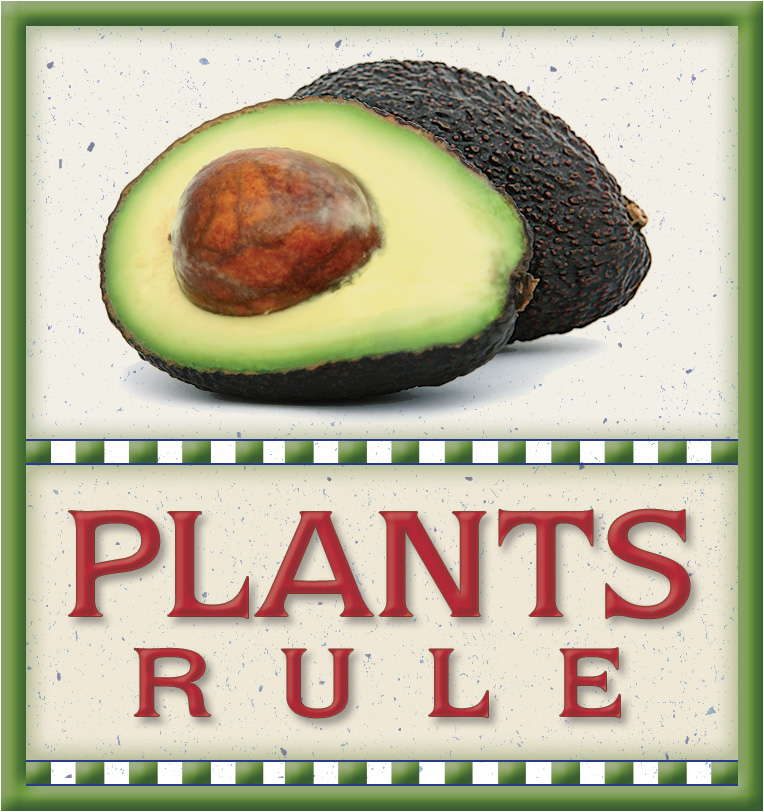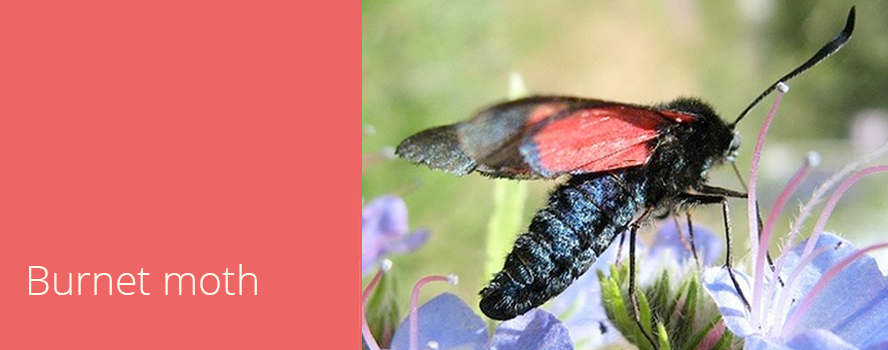Photo by S. Banerjee
Insects That Make Cyanide
by Helga George, Ph.D.
Burnet moths have not only adapted to their host plant’s cyanogenic glucosides, they also have the ability to synthesize and sequester hydrogen cyanide.
Many plants have adapted to evade predation and disease by producing secondary metabolites. Frequently these compounds are toxic, but herbivores and pathogens of such plants have developed a tolerance to these chemicals. This process is known as co-evolution and can lead to organisms becoming dependent on the plant’s compounds for their own development. Many insects are resistant to cyanide-producing plants. Some moths in the family Zygaenidae, known as burnet moths, have even evolved the ability to synthesize the same cyanogenic compounds as their host plants.
Insect Cyanogenic Glucoside Production Developed During Co-evolution
Some toxic compounds are present constitutively and are known as phytoanticipins. Cyanogenic glucosides (Cnglcs) are one class of these compounds. These are inactive compounds with hydrogen cyanide (HCN) bound to a sugar molecule. They release HCN when the tissue is disturbed, and the compounds interact with a specialized beta glucosidase enzyme. The Cnglc and the beta glucosidase are stored in separate compartments and only meet when the tissue is disrupted, such as by an insect’s chewing.
Insects that feed on a broad array of plants are likely to be deterred by the presence of HCN in a plant. Those that depend on a particular species of plant that make cyanide are frequently adapted to not only tolerate the HCN, but also to sequester it from the plant. By doing so, these specialized insects can utilize Cnglcs to defend themselves against predators.
Various species of insects are able to utilize Cnglcs that they have sequestered from plants. Several types of insects can synthesize HCN, including some species in the orders of beetles, true bugs, and moths and butterflies. Their predators are generally not adapted to the effect of cyanide, which inhibits the mitochondrial oxidation step of cellular respiration. [link to cellular respiration article]
Burnet Moths Produce Cyanogenic Glucosides for Defense
Burnet moths are all capable of synthesizing HCN. The most well studied system is that of Zygaena filipendulae, the six-spotted burnet moth, with its host Lotus corniculatus, bird’s-foot trefoil. This insect makes the same cyanogenic compounds as its host—limanarin and lotaustralin—the most common type of Cnglcs in plants and insects. The larvae also prefer to feed on plants with high amounts of cyanide compared to those that produce little or no HCN.
Even when the moths are grown on strains of bird’s-foot trefoil that do not produce any cyanide, the caterpillars and the moths still contain limanarin and lotaustralin. This indicates that the cyanogenic compounds are definitely being produced by the insect and are not just being sequestered from the trefoil plant. Candidate genes for the production of these Cnglcs from the six-spotted burnet moth have been identified (Zagrobelny et al. 2009) using the techniques of pyrosequencing—a new automated DNA sequencing technique. These insects are thought to use the same enzymes that plants use to synthesize their cyanogenic glucosides [link to cyanogenic plant article].
The Role of Cyanogenic Glucosides in the Mating of Zygaena Moths
These Zygaena moths are highly specialized in their use of limanarin and lotaustralin. Aside from being used to defend themselves against predators, these Cnglcs are used in various aspects of mating of the six-spotted burnet moth (Zagrobelny et al. 2007). The females release a plume of hydrogen cyanide when they are perched waiting for a male. It is thought that this cyanide is acting as a pheromone—a chemical attractant—for the male.
Females prefer to mate with males that have greater concentrations of cyanide. The males give the Cnglcs to the females as a “nuptial gift” during mating. They transfer the cyanogenic compounds to the females. This extra HCN is thought to help the females better protect her eggs. It also appears that the Cnglcs may be used as a source of stored reduced nitrogen and sugar for the insects.
Zygaena Moths are Highly Specialized for Their Hosts
Many plants produce toxic secondary metabolites for their defense. Insects that have undergone a process of co-evolution with their host are adapted to either detoxify or sequester the toxic compounds and thus avoid their effects. Some insects that feed on plants producing cyanogenic glucosides are able to utilize the plant’s cyanide to defend themselves against predation. Burnet moths are able to synthesize their own cyanide to protect themselves. Zygaena filipendulae moths have evolved specialized uses for the cyanide, such as utilizing it during their mating process.
References:
Morant, A.V, K. Jørgensen, C. Jørgensen, S.M. Paquette, R. Sánchez-Pérez, B.L. Møller, and S. Bak. 2008. “β-Glucosidases as detonators of plant chemical defense.” Phytochemistry 69:1795-1813 abstract
Zagrobelny, M., S. Bak, C.E. Olsen, and B.L. Møller. 2007. “Intimate roles for cyanogenic glucosides in the life cycle of Zygaena filipendulae (Lepidoptera, Zygaenidae).” Insect Biochemistry and Molecular Biology 37:1189-1197 abstract
Zagrobelny, M., S. Bak, and B.L. Møller. 2008. “Cyanogenesis in plants and arthropods.” Phytochemistry 69:1457-1468. abstract
Zagrobelny, M., K. Scheibye-Alsing, N.B. Jensen, B.L. Møller, J. Gorodkin, and S. Bak. 2009. “454 pyrosequencing based transcriptome analysis of Zygaena filipendulae with focus on genes involved in biosynthesis of cyanogenic glucosides.” BMC Genomics 10:574 doi:10.1186/1471-2164/10/574
QUICK LINKS TO ALL
Suite.io Articles
by Helga George, Ph.D.
AGRICULTURAL SCIENCE
• Polyphenol Oxidase Enzymes Cause Browning of Fruits and Vegetables
CHEMICAL ECOLOGY
• Domoic Acid Poisoning in Sea Lions
• Insects that Make Cyanide
PLANT PATHOLOGY
• Plants Produce Chemicals as a Defense Against Pathogens
• Wheat Rust Threatens World’s Wheat Crops
• Biotrophic Versus Necrotrophic Fungi
• Fungal Haustoria Absorb Nutrients from Living Plant Cells
• The Gene-for-Gene Concept: a Central Tenet in Plant Pathology
GARDENING
• Oenothera speciosa—a Drought Tolerant Perennial Groundcover
• The Magic Lily—a Drought Tolerant Species of Lycoris
SOIL MICROBIOLOGY
• Streptomyces, Antibiotics, and Microbial Conflict in the Soil
AGRICULTURE IN SANTA BARBARA COUNTY
• Chrysanthemum White Rust Outbreak in Southern California

